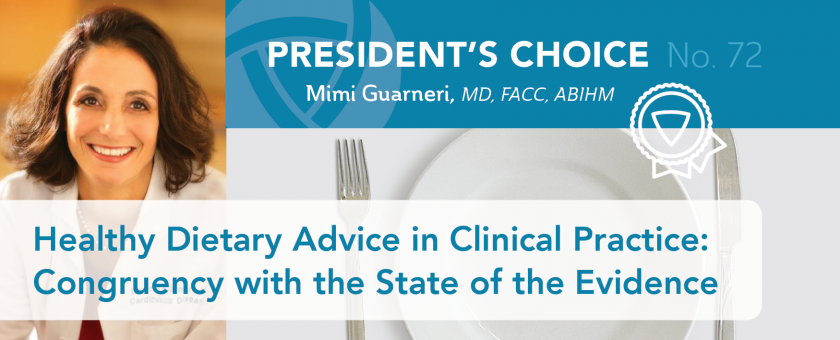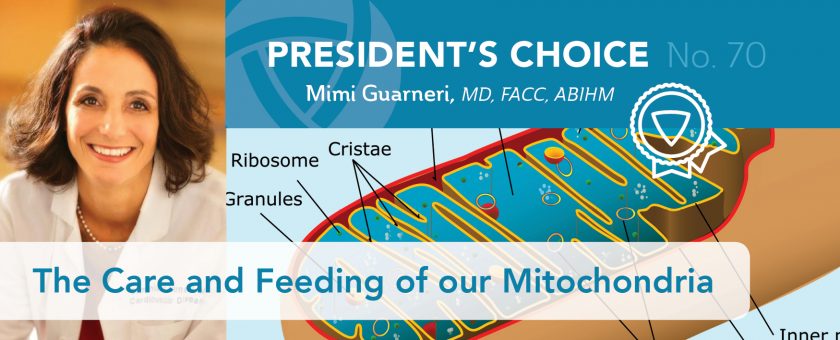
AIHM PRESIDENT’S CHOICE NO. 72: HEALTHY DIETARY ADVICE IN CLINICAL PRACTICE: CONGRUENCY WITH THE STATE OF THE EVIDENCE
May 4, 2017AIHM PRESIDENT’S CHOICE NO. 73: TELECEBO AND HEALING
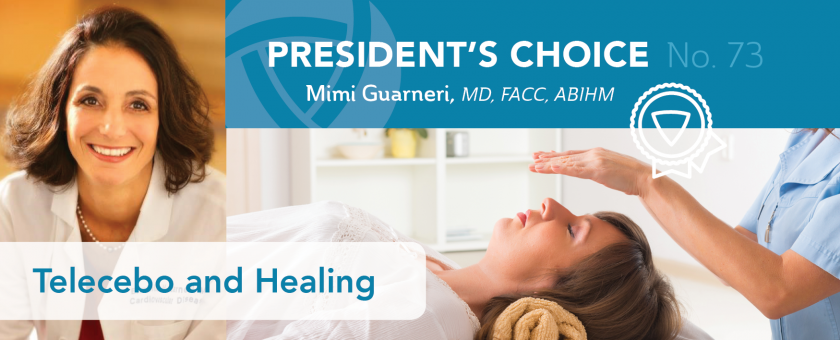
Telecebo: Beyond Placebo to an Expanded Concept of Healing
One of my personal areas of interest is understanding the impact we have on our patients by how we connect.
Most patients come to us seeking hope. Our exam and treatment rooms are sacred space. The interaction we have with our patients is powerful medicine. This is exemplified in Dr. Larry Dossey’s exploration of consciousness and healing, entitled, Telecebo: Beyond Placebo to an Expanded Concept of Healing (EXPLORE Jan/Feb 2016).
As a clinician, I firmly believe that a patient’s emotions and thoughts have an impact on clinical outcome. In fact, this is the premise of mind-body medicine. Studies about the effects of placebos have been in our medical literature for decades, even centuries. Whether it is improvements in angina or knee arthritis, incorporating placebos in therapy has proven effective. More comprehensive views of placebos offer terms such as “interpersonal healing,” a process activated by the interaction between the clinician and patient.
Recently, even more inclusive approaches have been reported, which are well worth our attention and consideration.
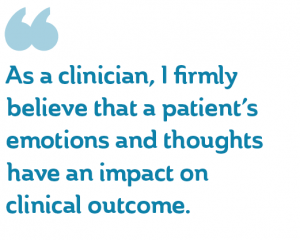 Telecebo Effect
Telecebo Effect
Dr. Dossey takes our understanding of placebo and interpersonal healing a step further with the concept of the telecebo effect. “Telecebo” is a neologism formed by combining the Greek “tele,” meaning far or distant, with the fragment “cebo” from “placebo.” Telecebo effects, unlike placebo effects, are not generated from the patient. Rather, they are generated by the health practitioner through “an exteriorization of a clinician’s, nurse’s, therapist’s, or healer’s intentions and thoughts for a patient’s welfare.”
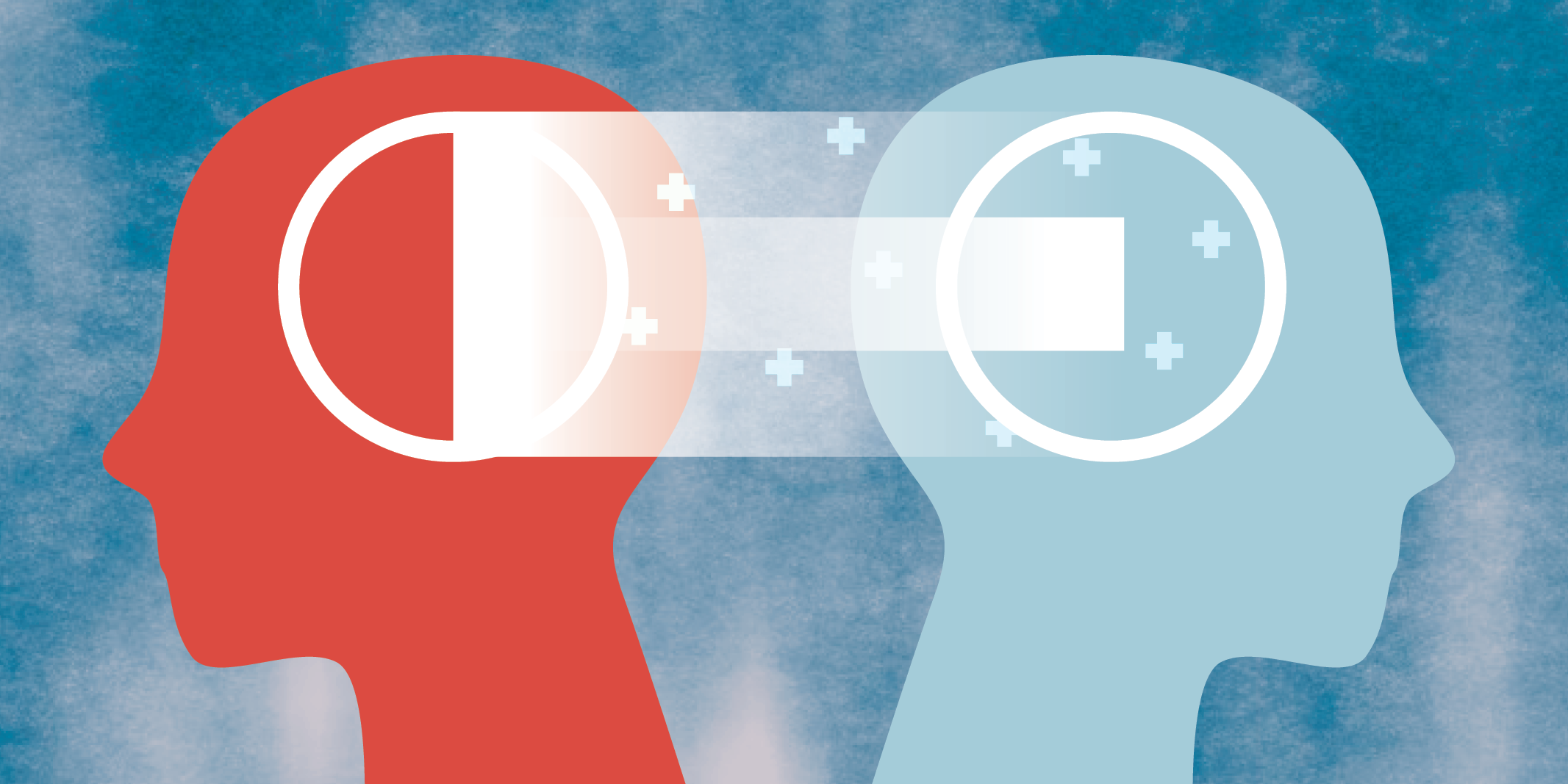
Telecebo effects represent an exteriorization of the intentions, thoughts, or emotions of a clinician toward a patient. They may be positive or negative.
Highlighted Studies
Dr. Dossey cites many studies, but to me the most notable is the work of Researcher Jeanne Achterberg, who is well known for her decades-long research in imagery, visualization, and healing intentions. Achterberg recruited 11 native healers in Hawaii. Each healer was asked to select a client with whom they felt empathy and compassion.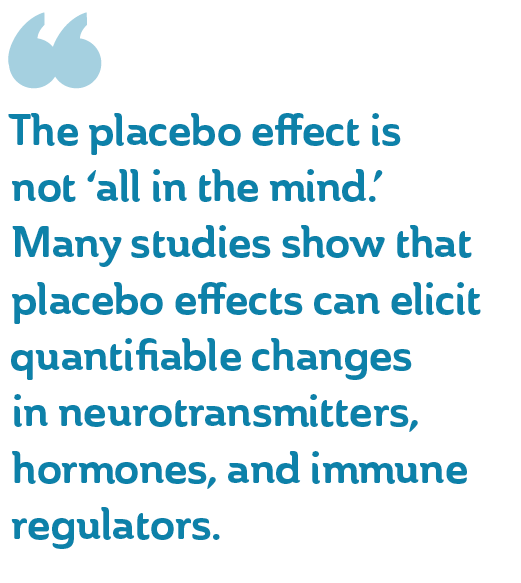 Each client was placed in an fMRI scanner separate from the healer. At two-minute random intervals, the healers sent prayers or healing intentions from a distance. Significant differences were noted in the client’s brain activation during “send” and “no send” periods. The study suggests that healing intention from the healer to the client can be seen with measurable effects.
Each client was placed in an fMRI scanner separate from the healer. At two-minute random intervals, the healers sent prayers or healing intentions from a distance. Significant differences were noted in the client’s brain activation during “send” and “no send” periods. The study suggests that healing intention from the healer to the client can be seen with measurable effects.
Similar studies have shown that when the brain of one individual is stimulated, the distant individual’s brain often responds at the same time. (If this is of interest, please consider reading Entangled Minds by Dean Radin, a consciousness researcher at the Institute of Noetic Sciences.)
I was also intrigued by the 2008 work on Therapeutic Touch, a Healing Touch technique, that was shown to significantly stimulate proliferation of fibroblasts, tenocytes and osteoblasts in cell culture.
Closing Thought
As Dr. Dossey says, “employing telecebo effects is not optional, but obligatory. Doctor-patient interchanges are seldom emotionally neutral, because physicians are not emotion-free automatons.” Healing intention can be used deliberately by healthcare providers to impact a patient’s healing process. This research is invigorating. I urge you to read the complete article (available on our website). Then, let us explore the topic of at our annual conference this October with Dr. Dossey, who will be a keynote speaker.
Blessings on your journey,
Mimi Guarneri, MD, FACC, ABIHM
AIHM President

